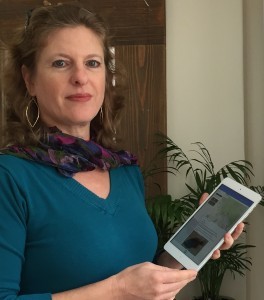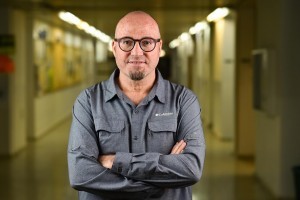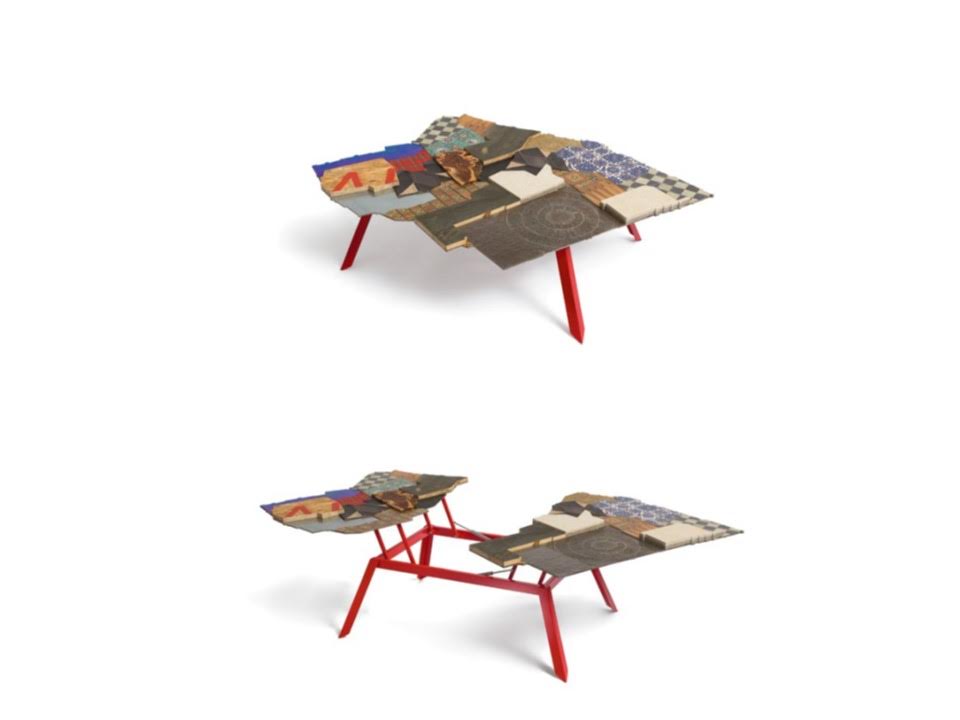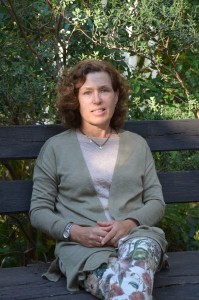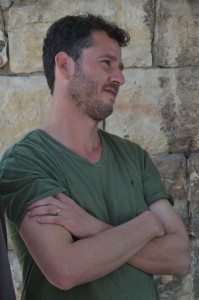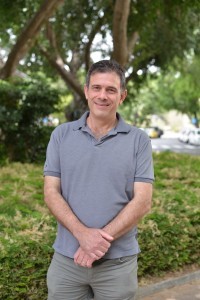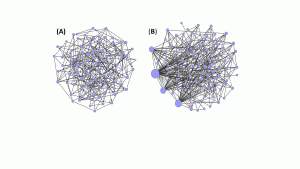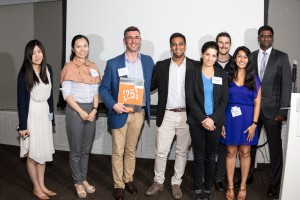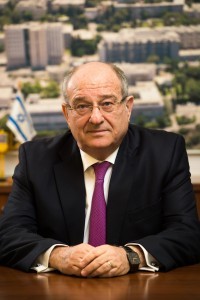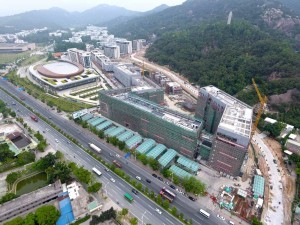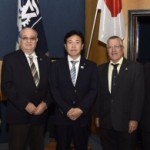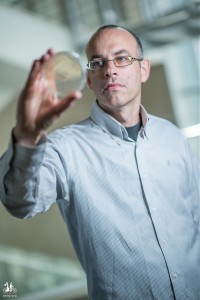2016 Harvey Prize Awarded for the Discovery of Gravitational Waves and Development of Optogenetics
The Harvey Prize was awarded to two research groups that revolutionized two fields of science: astrophysics and brain research. The ceremony was held as part of the Technion Board of Governors events. “Both of these groups have contributed significantly to our understanding of the universe,” said Technion President Prof. Peretz Lavie. “One achieved a breakthrough in our understanding of the outer universe, and the other at the most internal level – the living cell.”
The Harvey Prize is the most prestigious scientific award conferred by Technion, and has been awarded annually since 1972 in recognition of outstanding contributions to science, technology, medicine, and peace in the Middle East. The prize fund was established by the late Leo M. Harvey (1887-1973), an industrialist and inventor from Los Angeles. Scott Leemaster, Chairman of the American Friends of the Technion, said that the Harvey Prize has become a “Nobel predictor,” since around 20% of its winners are later awarded the Nobel Prize. He noted that the heritage of the Harvey family continues to live on through the prize.
Group 1: Discovery of Gravitational Waves
In the field of science and technology, the prize was awarded to Profs. Emeritus Ronald Drever and Kip Stephen Thorne of the California Institute of Technology (Caltech) and to Prof. Emeritus Rainer Weiss of MIT. The three scientists, who led the LIGO experiment, received the prize for the discovery of gravitational waves, which verified a key prediction of Einstein’s general theory of relativity and opened a new window to the universe.
Gravitational waves are curved “ripples” that move in the four-dimensional space. Monitoring these waves is a huge scientific-engineering challenge because unlike light, which is easy to monitor due to its strong interaction with matter, gravitational waves do not maintain strong interactions and must be monitored in a highly sensitive facility that is not affected by minor earthquakes and nearby vehicle traffic. Moreover, the movement being monitored is smaller than a single atom. Indeed, LIGO is a tremendous and particularly sensitive gravitational wave detector (interferometer), in which laser beams move through a long vacuum sleeve that increases the sensitivity of the system.
The gravitational waves trapped by the LIGO scientists were created in a fusion of two particularly large black holes. The collision, which took place 1.3 billion years ago, lasted a fraction of a second but created tremendous energy that generated the gravitational waves when they reached Earth, monitored by the system.
Einstein hypothesized the existence of gravitational waves in his theory of general relativity; their existence was verified indirectly in the 1970s, which won scientists Taylor and Hales the Nobel Prize for Physics in 1993. However, direct observation of these waves occurred only in 2015, at the LIGO facility. Even though Einstein retracted his prediction 20 years after his initial discovery in 1916 and denied the existence of gravitational waves, Weiss, Drever, Thorne, and their colleagues have proved that Einstein erred in his denial. Top scientists around the world estimate that this success will lead to the formulation of a “unified theory,” which will explain most of the phenomena in the universe based on the four physical forces: strong nuclear, weak nuclear, electromagnetic, and gravitational.
Profs. Weiss and Thorn, who led the discovery of gravitational waves, noted at Technion’s Harvey ceremony that they represent a group of about 1,000 scientists and engineers from 16 research institutions from around the world. They thanked the experiment directors; the US Congress, whose support was steadfast over the years; and the US National Science Foundation (NSF), which supported the project for 40 years even though, in the words of Prof. Weiss, “It was a big gamble on a technology without certainty that it would succeed, and US taxpayers’ money.”
The third scientist who was awarded the Harvey Prize for the LIGO experiment is Prof. Emeritus Ronald Drever, who passed away in March. His brother Ian, who accepted the prize on his behalf, said that Ronald was a born scientist who invented many things and conducted experiments even as a boy. Toward the end of his life, Drever suffered from dementia but updates on the LIGO experiment and news of the prize were beneficial to his health.
Group 2: Development of Optogenetics
In the field of human health, the prize was awarded to Prof. Karl Deisseroth of Stanford University and Howard Hughes Medical Institute and Prof. Peter Hegemann of the Humboldt University of Berlin. They received the prize for the discovery of the opsin molecules involved in sensing light in microorganism cells and their digitalization in the development of optogenetics. This innovative and original approach, which has revolutionized the field of neurobiology, enables the study of the function of nerve cells, and the connection between neural networks and animal behavior.
Optogenetics, one of the hottest areas of brain research today, is a highly accurate method for stimulating the brain and is therefore considered the best method for activating specific cells in order to test their effect on the function of an organism. The method makes it possible to affect brain cells by means of light, without electrodes. Using this approach scientists have succeeded in establishing, erasing, and changing memories, albeit in mice at this stage.
Israeli scientists are the most innovative and productive scientists in Europe today in various fields; following are a few examples. Prof. Lior Gepstein of the Rappaport Faculty of Medicine has developed a method for the treatment of arrhythmia by means of optogenetics. Prof. Shay Shoham of the Faculty of Biomedical Engineering has developed the first combination of optogenetics and holography as a means of restoring vision among patients with retinal blindness. Asst. Prof. Asya Rolls of the Rappaport Faculty of Medicine uses optogenetic means to discover how the brain’s reward system enhances the immune system’s activity. Prof. Itamar Kahn of the Rappaport Faculty of Medicine combines optogenetic methods with brain fMRI in order to study the mechanism of neurons and neuronal networks.
Recipient Prof. Deisseroth, a psychiatrist and neuroscientist, said, “It is difficult to study the problems that cause people great suffering because psychiatry has many elements which are difficult to measure, and the brain is difficult to understand.
“The development of optogenetics is indeed a tremendous achievement; however, it does not belong solely to two researchers, but to generations of scientists whose work led to the accumulation of the knowledge necessary for the breakthrough. For this reason, receiving the Harvey Prize is a great honor for me, because it recognizes basic science – a practice that is not always sufficiently appreciated. Basic science often leads to dramatic developments in medicine without the scientist knowing at the outset where his research will lead. The lesson to be learned from the development of optogenetics is the importance of public support for basic science.”
Recipient Prof. Hegemann said excitedly that for him as a German the Harvey Prize is more important than other prizes he has won over the years. “One hundred and twenty years ago, Berlin was a world center of science where Einstein worked, and then the greatest disaster of all time occurred, which caused a severe blow to the Jewish people.
Israeli scientists are the most innovative and productive scientists in Europe today
“The recovery of German-Israeli relations is a wonderful phenomenon in my eyes. I visited Israel in 1977 for the first time and was amazed to discover the highly developed scientific ties between Israel and Germany. I think that the depth of the discussion, the culture of discourse, and the Israeli openness enables us, the Germans, to maintain beneficial and fruitful relations with Israeli scientists. Israeli scientists are the most innovative and productive scientists in Europe today, and I regret that I have not stayed here for longer periods of cooperation – but that might still happen.”

